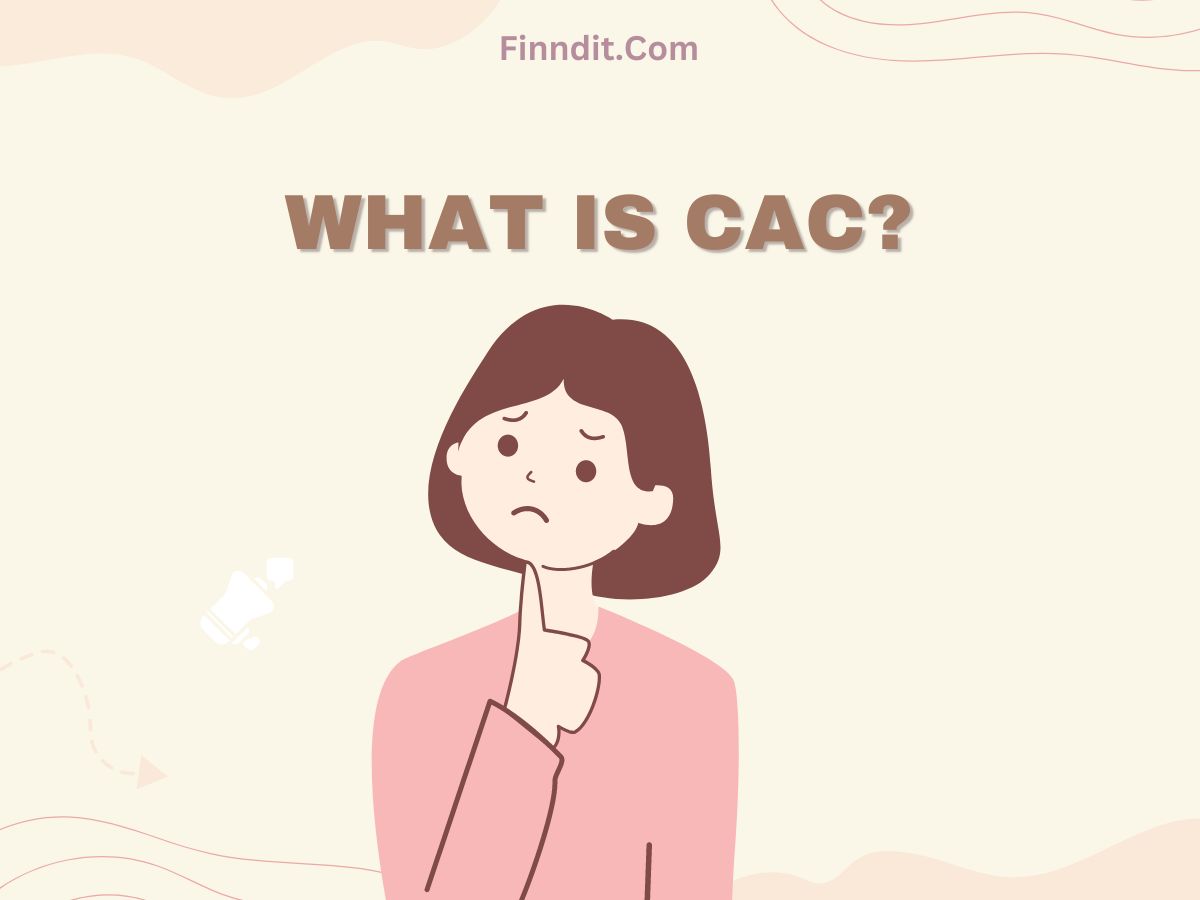What is CAC? Understanding CAC: A Comprehensive Guide to Customer Acquisition Cost

Customer Acquisition Cost (CAC) is a metric that measures the cost incurred by a business to acquire a new customer.
It is an important metric for businesses because it helps them determine the cost-effectiveness of their marketing and sales efforts.
This blog post will explore CAC in detail and how it can be calculated and optimized for maximum ROI.
Calculating CAC
To calculate CAC, you must divide the total amount spent on acquiring customers (including marketing and sales expenses) by the number of new customers acquired during a specific period.
For example, if a company spent $10,000 on marketing and sales activities in a month and acquired 100 new customers in that same month, the CAC would be $100.
Optimizing CAC
To optimize CAC, businesses need to focus on reducing the cost of acquiring customers while increasing the number of customers acquired. There are several strategies that businesses can use to achieve this, including:
Improve customer targeting: Businesses can use data-driven insights to identify their ideal customers and tailor their marketing and sales efforts accordingly.
By focusing on the most promising prospects, businesses can reduce customer acquisition costs while increasing their chances of success.
Optimize marketing channels: Businesses can optimize their marketing channels by measuring the ROI of each channel and focusing on the most effective ones.
For example, if a business finds that its social media advertising is generating many new customers at a lower cost than other channels, it can focus more on social media advertising to optimize CAC.
Improve customer retention: Businesses can improve customer retention by providing a superior customer experience, leading to repeat purchases and positive word-of-mouth marketing.
By retaining more customers, businesses can reduce their CAC and increase their ROI over time.
Finndit - Example
Let's take the example of Finndit, a new online marketplace for handmade crafts. Finndit has just launched its website and is looking to acquire new customers.
In its first month, the company spends $5,000 on social media advertising and Google AdWords and acquires 50 new customers. This means that the CAC for Finndit's first month is $100 ($5,000/50)
To optimize its CAC, Finndit can take the following steps:
Improve customer targeting: Finndit can use data-driven insights to identify its ideal customers and tailor its marketing efforts accordingly.
For example, if it finds that its ideal customers are women between the ages of 25-45 who are interested in DIY crafts, it can focus its marketing efforts on this group to optimize CAC.
Optimize marketing channels: Finndit can measure the ROI of its marketing channels and focus on the most effective ones. For example, if it finds that its social media advertising generates many new customers at a lower cost than Google AdWords, it can shift its budget to social media advertising to optimize CAC.
Improve customer retention: Finndit can improve customer retention by providing a superior customer experience.
For example, it can offer personalized recommendations to customers based on their purchase history, provide excellent customer service, and incentivize repeat purchases with discounts and promotions.
FAQ Related to CAC
What is a good CAC?
A good CAC varies depending on the industry and business model, but generally, a CAC that is lower than the customer's lifetime value (LTV) is considered good.
How can I reduce my CAC?
You can reduce your CAC by improving customer targeting, optimizing marketing channels, and improving customer retention.
What factors can affect CAC?
Factors that can affect CAC include the cost of marketing and sales activities, the effectiveness of marketing and sales efforts, and the industry's competitiveness.
Should I focus on reducing CAC or increasing LTV?
Both are important, but reducing CAC in the short term is generally easier, while increasing LTV is a long-term strategy.
Can CAC vary by customer segment?
Yes, CAC can vary by customer segment. Depending on demographics, interests, and buying behavior, some segments may be more expensive to acquire than others.
How frequently should I measure CAC?
You should measure CAC regularly, at least monthly or quarterly, to track changes and adjust your strategies accordingly.
Is CAC the same as cost per acquisition (CPA)?
Yes, CAC is sometimes used interchangeably with CPA, although some may use CPA to refer specifically to the cost of acquiring a customer through advertising.
What is the relationship between CAC and ROI?
CAC is a key factor in calculating ROI, representing the cost of acquiring a customer. By reducing CAC, businesses can increase their ROI.
How can I benchmark my CAC against industry averages?
You can benchmark your CAC against industry averages by researching industry reports and consulting with experts in your field.
What other metrics should I consider alongside CAC?
Other metrics to consider alongside CAC include customer lifetime value (LTV), customer churn rate, and customer acquisition rate. By tracking these metrics alongside CAC, businesses can better understand their customer acquisition strategy.
In conclusion
CAC is an important metric for businesses because it helps them determine the cost-effectiveness of their marketing and sales efforts.
By calculating and optimizing CAC, businesses can reduce their customer acquisition costs while increasing the number of customers acquired, leading to higher ROI over time.
